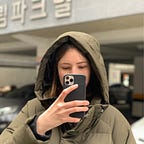07 | Micro UX: The Microverse
Group members: Damul Yang, Moxue Jia, Giada Han and Maria Shuttleworth
<<< For my previous project on Micro UX, click here.
Our main concerns this week were to make the change in state in the TouchDesigner visuals more obvious, and to finalise the space in which we were to present.
I worked with Giada to help her change the visuals to be less subtle, although we ran into several problems along the way and it turned out to be harder than we thought. The following is as obvious as we could make it, however this did not translate as well as we had hoped when placed in the experience.
While figuring out technicalities with the visuals, I worked with Damul and Moxue to organise how the room would look. We were not going to be able to manage having the projection on three walls like we had originally hoped, so we narrowed it down to one.
Thanks to a suggestion by John and Al last week, we decided to smooth the transition between outside and inside the space by using Alice in Wonderland-esque potions. The one outside would shrink you to micro-level, and before you leave you would grow to human level.
We decided to place our two microscopes from the midpoint presentation outside the space, one with an alive leaf and another dead. This was due to feedback from last week that said it was not clear what they were viewing in the projection as it was too abstract, and they needed something real to compare it to.
In addition to the microscopes, we took the feedback about feeling a little confused in the experience without a presentation precursor and placed some graphics around the experience to guide participants. There were two outside the space describing what they were about to see, and footprint guides inside so people know where to stand.
Finally, we added a birdsong and wind backing track to the experience, as well as a whooshing sound that was triggered by movement too close to the camera — this was to signify something changing, and the balance being broken. This was to aid immersion and utilise more senses than just visual.
Where could this go outside UAL?
We thought a future use for our project could be to place it inside a similar tent to the one they already have for the garden cafe. This could become a pop-up interactive exhibition in the garden, where it would work in a similar way to how it does in the university; people come and go, and see themselves imposed onto the cells on screen in front of them.
Presentation.
We lead participants through the entrance and gave a brief introduction to the experience once they were in the space. After which, we just let them experiment with what they saw.
It was fulfilling seeing people enjoy our experience, and it just made me wish that we could have spent more time finessing the experience.
Feedback.
Unfortunately our project partner was unable to come to the final presentation, however we received wonderful feedback from the other partners and our peers and teachers.
A project partner mentioned that it felt like a “walk-in microscope” — one where the doorway and staging were humbling. Forcing people to get on their knees to enter the experience would be an unusual ask for the typical audience at CPG, however it presents an exciting challenge as well as expands its audience.
John and Al commented that the communication of our idea was good, however we could have taken the project further, adding that it felt like we needed another two weeks. I agree with this — I would have loved to spend more time making it more immersive, extreme, as well as pushing the visual language as it currently felt a little disjointed. Further, we had not managed to quite get over the hurdle of people’s movements not fully being picked up by our equipment. This is something that I wished we could have finalised for the final presentation, and would be something I would prioritise given I could do the project again.
Although I was happy with our outcome, I felt that it was still lacking in a few areas — many of which, the audience agreed with. They felt that the explanation was not clear, and that there could have been more narrative about the negative human impact on the microclimate.
On the other hand however, I believe that we had unintentionally utilised ambiguity in our outcome: “a powerful design tool for raising topics or asking questions, while renouncing the possibility of dictating answers” (Gaver et al., 2003). There were things that we all would have liked to develop given more time, however we were happy with the evocative nature of the project and really enjoyed collaborating on the brief.
>>> For my next project, click here.
References.
- Gaver, W., Beaver, J. and Benford, S., 2003. Ambiguity as a Resource for Design. Designing Design, 5(1).
